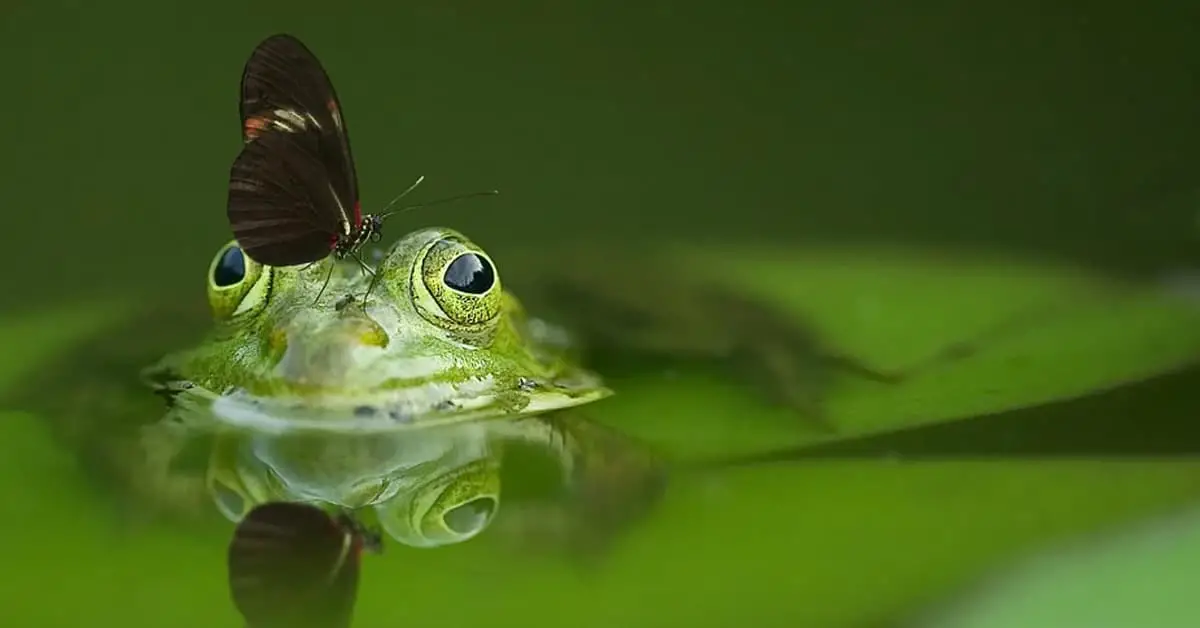Frogs can be your personal orchestra. They sing you to sleep and croak you back into reality. They have a pretty long lifespan, and this means they will be with you for a while. You will need to move them about for one reason or another. So, how do you transport frogs safely?
You can safely transport frogs in a plastic container or their primary vivarium or terrarium. The important thing is to maintain their regular temperature and humidity as you move them.
In this article, I talk about the reasons for moving a frog. I have also discussed safe and unsafe ways to transport frogs. In conclusion, I will describe how to transfer frogs to a new tank.
Can I Move a Frog?

You can move a frog from one container to another. You can even move that container from one location to another. Whether it’s from a bedroom to a living room or interstate, you can move a frog. There are many reasons for moving a frog.
When you buy a frog, you carry it from the pet shop/show to your home. In order to clean the frog’s tank or make repairs to it, you need to move the frog into temporary housing. A trip to the veterinarian and your relocation also requires “Froggie” to be moved again.
How you move the frog is another matter entirely. It should survive the move and should experience as little stress as possible. Frogs are skittish, being prey animals. Thus, movement or transport of any kind is highly stressful for them.
You should not be moving a frog captured from your garden into your house as a pet. Those frogs are not bred for pet purposes and need to remain in the wild. Unless it is necessary, leave the frog where it is.
How Do You Transport Frogs Safely?
Frogs are delicate animals that can be squashed easily. Don’t let their energetic jumps fool you; handle them with the utmost care. Safely transporting frogs involves taking these precautions:
1. Use a styrofoam/cooling box
This helps a lot with long-distance transport. Place the container(s) with the frogs in the box for great insulation.
2. Gel packs and heating pads
A gel pack helps to stabilize the temperature of the frogs in transit. Heating and cooling pads are also used depending on the environmental temperature. Temperature is very important for frogs, and you should keep them between 64 to 78 degrees Fahrenheit.
3. Transport container
Choosing the right container for the frogs is vital for safe transport. You want a container that is well ventilated and sealed. Any frog that escapes might become frog jerky. For quick trips, use Tupperware containers or plastic bags.
Holding tanks or the frogs’ main tank can be used for long journeys. Place them on flat, even surfaces to prevent jostling or tipping over. Secure with a seatbelt in the backseat if necessary. You may have to cover the tank with a blanket for warmth and shade from the sunlight.
Place a substrate at the bottom of any tank to provide hydration for the frogs. Wet paper towels or sphagnum moss are good enough. You also need to place some items for a hideout—plants of light wood.
4. Humidity
For frogs that are not aquatic, you need to maintain a mist within their holding container. This is for humidity. You can fill a spray bottle with dechlorinated water and spritz the tank often. You don’t want your frog drying out before you get to your destination.
5. Watch out for the seasons
Although there are heating and cooling aids available to moderate the temperature of frogs during transport, it would still be nice to not move them in harsh weather. The preparations required might be cumbersome, so it is best to avoid transporting in extremely hot or cold weather.
How Do You Transfer Frogs to a New Tank?

Frogs can get huge and require a change of tank. You may also desire to get new friends for your old pets. Whatever the reason, you want to change from a small tank to a larger tank or vice versa.
Given how delicate frogs are, it takes time to prepare a new tank for them. Aquatic frogs seem to need the utmost preparation for this kind of transition. If you cannot get everything sorted within a couple of days, it is okay to build up the tank little by little.
You owe it to the frogs to do excellent research on the best appliances and setup that will give them a comfortable and thriving home.
It is very exciting to move frogs from an old habitat to a new tank. You have probably spent a lot of time designing the tank and fitting it with all the filters, heat, and light sources that it needs. The tank has been cycled, and it is bioactive.
The substrate is looking good; the plants are blooming colorfully, and all the hide-out spots are ready for use. Next up, you fill the tank with water. It should be half full or ¾ full, depending on the breed of the frog.
If you fill the tank with tap water, make sure you dechlorinate it and allow it to sit for the required amount of time. Putting the frogs in any sooner and the residual chlorine could negatively affect them.
Put the frogs in a closed plastic bag with some water from their old tank or temporary residence. Place this bag in the new tank and allow it to sit for a while. Take a small cup and remove water from the bag, replacing it with water from the new tank.
Do this every 10 to 15 minutes until the frogs are acclimatized to the water in the new tank. With a small fish net, transfer the frogs from the plastic bag into the new tank. Cover the net with your hand, so the frogs don’t jump away. Watch your little guys enjoy their new home!

